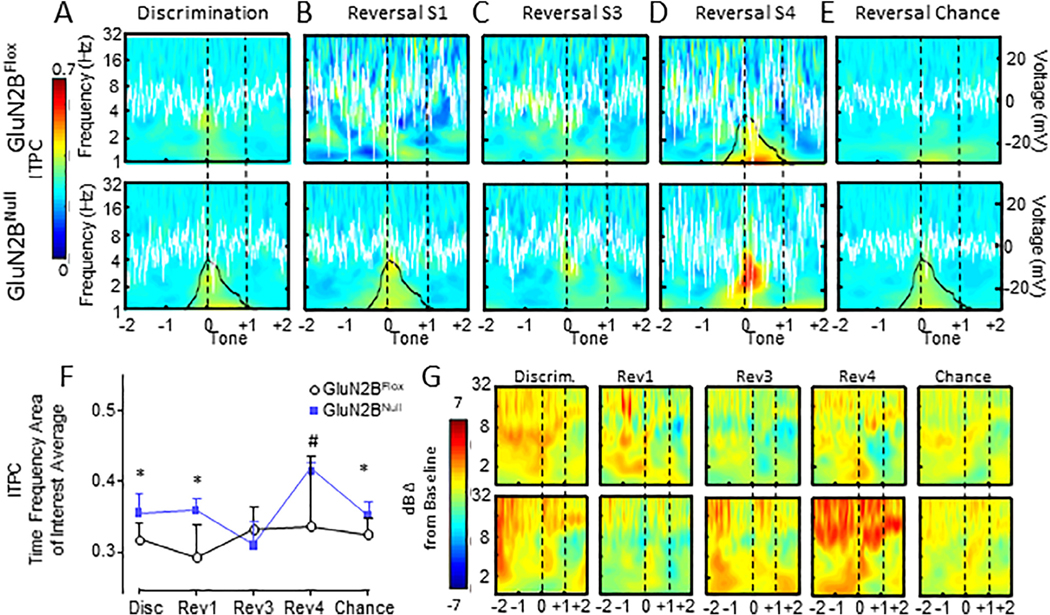Fig. 6.

OFC ITPC is increased by loss of corticohippocampal GluN2B. (A) Low levels of OFC ITPC, with a positive ERP in GluN2BFLOX and a negative ERP potential in GluN2BNULL, were seen at correct choice decision during discrimination, with significantly higher ITPC response in GluN2BNULL. Delta (1–6 Hz) power slightly increased post ITPC response in both genotypes. (B) ITPC increased in GluN2BNULL versus control during reversal session 1. ERP potential shifts at the reward cue were no longer time locked. (C) During the third reversal session GluN2BNULL had congruent levels of ITPC and ERP with controls. (D) ITPC was significantly greater during reversal session 4 than all other sessions in GluN2BFLOX and mutant mice. While and ITPC responses appeared exaggerated in GluN2BNULL during reversal session 4, these changes did not reach significance. Additionally, there were no differences in ERP magnitude response. (E) ITPC was significantly greater during chance reversal in GluN2BNULL mice compared to controls. No significant differences between genotypes were seen in ERP. (F) TF-ROI averaged ITPC magnitude average during each session in the OFC. # Main effect of session p < 0.05, * Significantly different between genotypes p < 0.05. (G) dB change from baseline power was not significantly different across sessions or between genotypes. N = 8 mice per genotype/recording session. Event related potential voltage is indicated by white line. Overall ITPC is shown via heat map. Black outline denotes significant difference between genotypes in the ROI (bottom row) or significant difference from all other sessions (top row).
